Center for Modern Japanese Legal and Political Documents, Graduate Schools for Law and Politics
Meiji Shinbun Zasshi Bunko
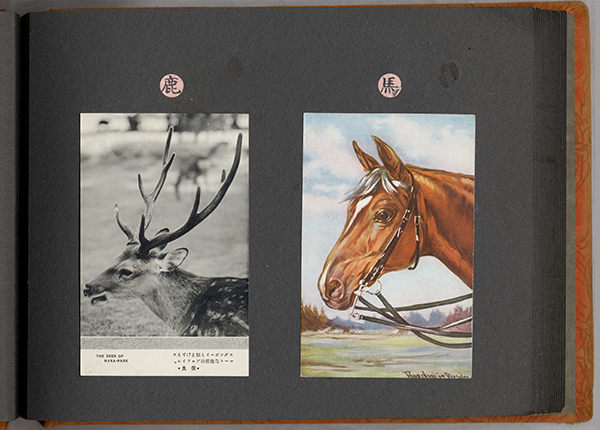
MEITAN (searchable online database for materials at the Meiji Shinbun Zasshi Bunko): www.meitan.j.u-tokyo.ac.jp
Sotaigo hyo (List of Relative Terms), a series of postcard booklets by Miyatake Gaikotsu
Gaikotsu compiled 340,000 postcards into 305 booklets by arranging the postcards according to different themes. The combination of postcards and the unique titles given to them turned these ordinary items into an extraordinary and extremely delightful masterwork. Here we can see the pinnacle of Gaikotsu’s eccentric editing skills.
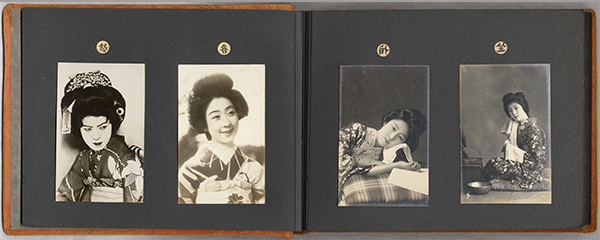
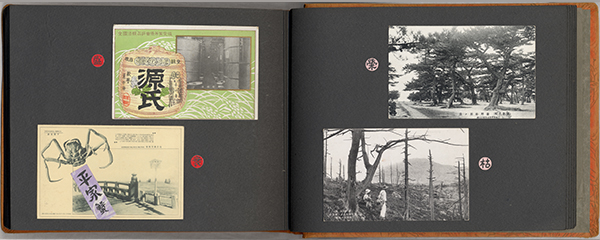
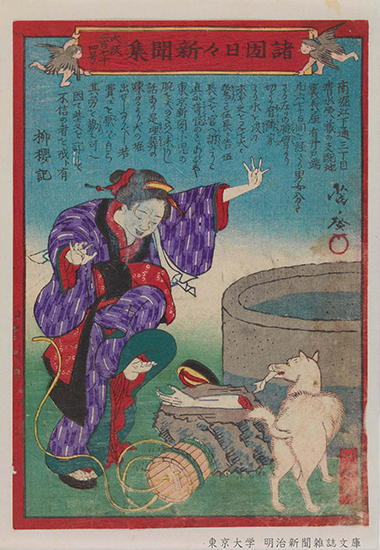 A “doggone” surprise at the well
A “doggone” surprise at the well
Shokoku Nichinichi Shinbun-shu Osaka (Osaka Daily National News), No. 274
“Inu ga Hito no Ude wo Kuwaete Kuru (A Dog Came Carrying a Human Arm in Its Mouth) ”
The left arm of an unknown man or woman, who is said to have been dead for 60 days, was found at the side of a well. This kind of bizarre story is the nishiki-e shinbun’s forte.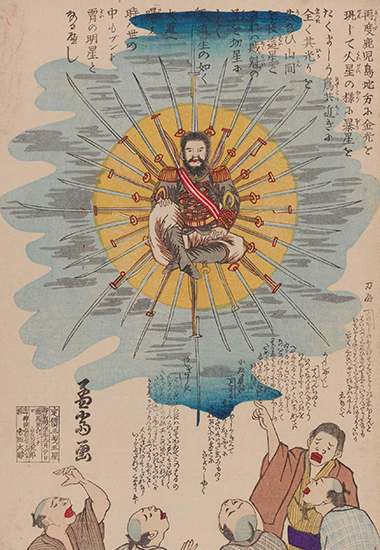 Mr. Saigo’s star is born
Mr. Saigo’s star is born
Tokyo E-iri Shinbun (Tokyo Illustrated News), No. 677
“Saigo-boshi no Uwasa (Rumors about the Saigo Star) ”
During the Satsuma Rebellion, Mars was at its closest approach to Earth. This nishiki-e (brocade picture) illustrates the rumors people believed that inside the planet was the late Rebellion leader Saigo Takamori.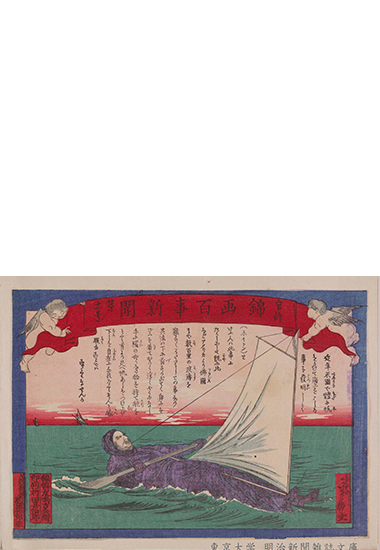 Do whatever floats your boat
Do whatever floats your boat
Nishiki-ga Hyakuji Shinbun (Brocade Picture News on Everything), No. 11
“Karada ni Ho wo Kakete Taiseiyo Odan (Sailing across the Atlantic)”
This nishiki-e shinbun tells the story of an American man who came up with an invention to make the human body into a boat that can easily sail to France. Don’t try this at home, kids!
Resources and Historical Collections Office, the Library of Economics
Historical Coins Collection
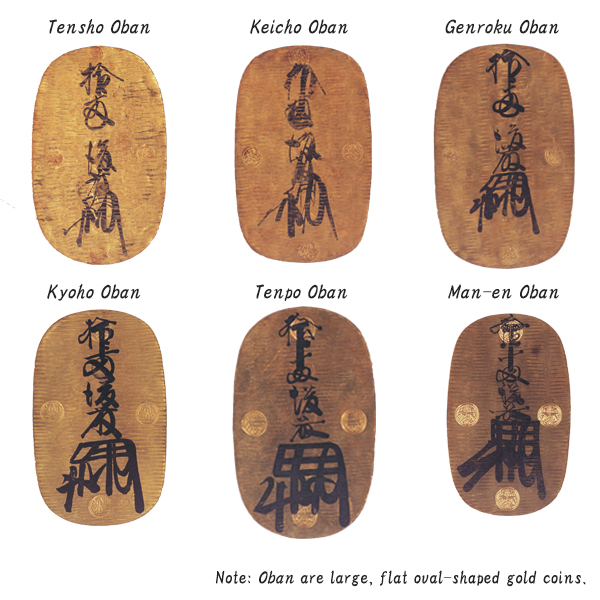
The library houses a complete collection of all six different types of impressive Oban, which measure approximately 15 cm in length. The Oban feature engraved seals in the Gosan no Kiri (five and three paulownia pattern) style; the characters and the Kao (seal signature) written in ink are of the Goto family, which had been in charge of minting the coins at the time.
Engel (Database of Historical Coins and Historical Bills Collection): www.i-repository.net/il/meta_pub/G0000381kahei
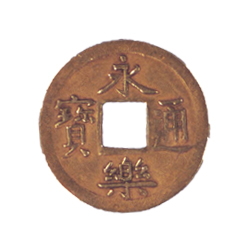
Eiraku Tsuho Gomon Kinsen (coin with Hideyoshi’s crest)
While Eiraku Tsuho are usually made of copper, this coin is made of gold. Hideyoshi is said to have given these as rewards to the daimyo who demonstrated distinguished service during his subjugation of Kyushu.
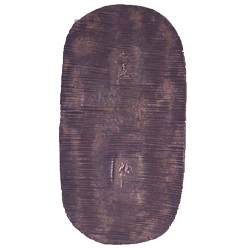
Tajima ichi ryo ginban (silver coin)
This small, oval-shaped coin is believed to have been minted at the Ikuno Silver Mine in the Tajima area (Hyogo Prefecture). There are only a few of these precious coins still in existence today.
The Historiographical Institute
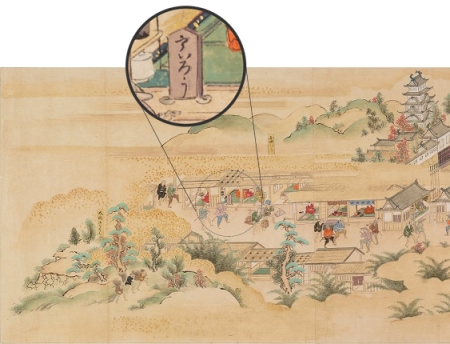
A signboard for Uiro, a famous brand of medicine and cake from the Odawara area, can be seen on this emaki. The original scrolls were destroyed in the Great Kanto Earthquake, so this reproduction is all that remains to remind us of those bygone days.
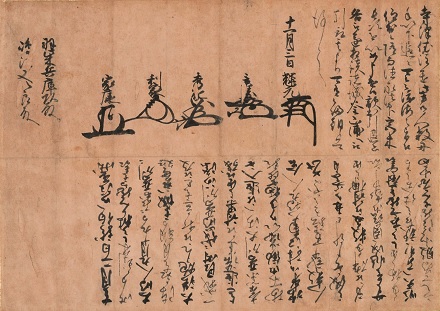
Letter with monograms of the Go-tairo (Five Elders) of the Toyotomi government
This is a letter addressed to Shimazu Yoshihiro during Hideyoshi's attempt to invade Korea. The kao (written seal signatures) that appear on the paper belong to Mori Terumoto, Uesugi Kagekatsu, Ukita Hideie, Maeda Toshiie, and Tokugawa Ieyasu. (Note that the characters below the kao are upside-down because the letter was originally folded.)
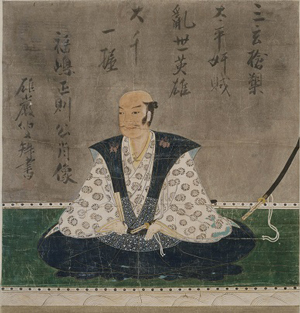
Portrait of Fukushima Masanori
Portrait of the daimyo known for being one of the “Seven Spears of Shizugatake.” Although the original picture has been lost, this reproduction made by the Historiographical Institute in 1905 still exists.
Interfaculty Initiative in Information Studies (III) Library
Valuable materials and collections

Support the Red Cross to protect the soldiers fighting for you; buy government bonds if you can’t go to the battlefront; let children eat oatmeal to save the wheat for soldiers; stand with the other women fighting in the War; be self-sufficient by raising vegetables in your school’s garden… all of these messages come with a sense of urgency.

Manchukuo, moving forward in marking the 2nd anniversary of its foundation; Crush the Americans and build up the new Philippines; Civilian-military unity has created paradise in Manchuria; Japan liberates the Orient from European domination; After the Chinese political party was driven out, Manchukuo has expanded so much, hasn’t it, sis? …the wording on these messages comes with a sense of urgency.






